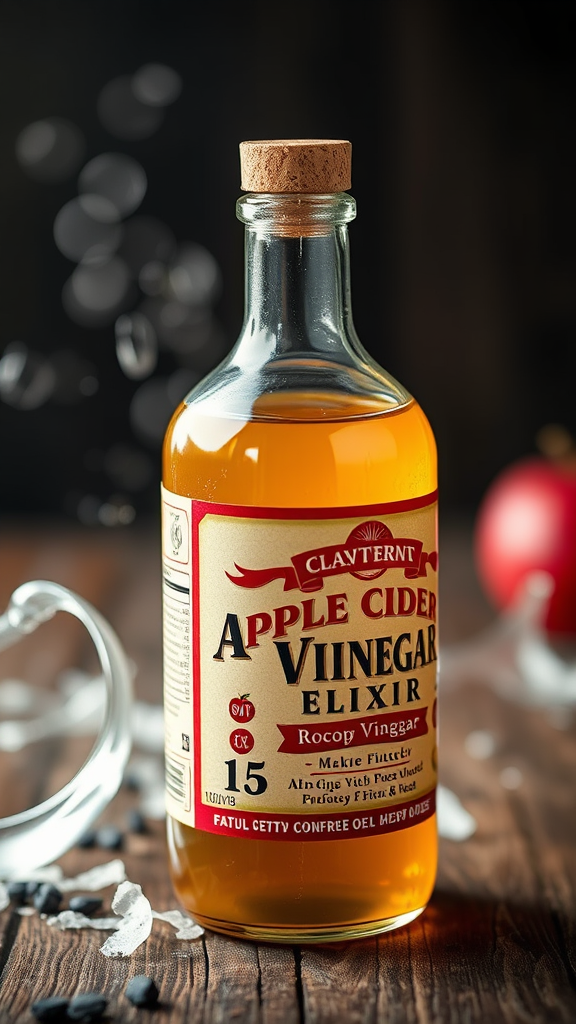DIY Guide: Whitening Teeth Naturally Recipes
In our pursuit of that picture-perfect pearly white smile, turning towards natural teeth whitening methods has gained immense popularity. This essay aims to provide a comprehensive understanding of natural teeth whitening by diving in deep into its concept, evaluating its benefits against its drawbacks, and elucidating the adoption of these healthy alternatives over the conventional treatments laden with chemicals. As we journey through our exploration, we delve into the myriad of natural ingredients that are celebrated for their teeth whitening properties, comprehending their significant benefits, usage, and any correlated side-effects.
Understanding Natural Teeth Whitening
Understanding Natural Teeth Whitening
Natural teeth whitening refers to the practice of using naturally derived products and ingredients to lighten and bleach the color of one’s teeth. This process is usually achieved through the use of common household items or widely available substances such as baking soda, hydrogen peroxide, apple cider vinegar, lemon or orange peels, or even strawberries.
The mechanism behind natural teeth whitening is largely based around abrasion and the breakdown of enamel stains. Ingredients like baking soda are abrasive and can help scrub away surface stains on teeth. On the other hand, substances like hydrogen peroxide or apple cider vinegar have a bleaching effect that can lighten the color of teeth from a deeper level.
Though the term “natural” may induce the assumption that these methods are inherently safer than commercial or chemical alternatives, this is not always the case. Natural teeth whitening methods do run the risk of damaging the tooth enamel if used improperly or excessively, as these methods rely on abrasive or acidic substances.

The Benefits and Drawbacks of Natural Teeth Whitening
A key appeal of natural teeth whitening is its accessibility and affordability. Most of the commonly used ingredients in natural teeth whitening methods are affordable and easily procured, making it a suitable option for those who cannot or do not want to invest in commercial teeth whitening products or professional whitening services.
The effectiveness of natural teeth whitening methods can vary greatly from person to person and is generally slower when compared to commercial or professional services. While some people may see a noticeable difference in the shades of their teeth after regular use, others might find the effects minimal.
However, the principal concern with natural teeth whitening lies with possible tooth enamel damage. The same abrasive substances that help remove surface stains can wear down the protective enamel layer of the tooth over time. If the enamel is compromised, it can lead to increased tooth sensitivity, cavities or other dental issues. Acidic substances like lemon or orange peels and apple cider vinegar can exacerbate this issue, as acidity can further damage enamel.
Natural teeth whitening also may not help with intrinsic stains, which are stains that reside inside the tooth rather than on the surface. These stains usually come from use of certain medications, trauma to the teeth or systemic issues, and they often require professional treatment to remove.
While natural teeth whitening methods can be a cost-effective and accessible option, it is advised to use these methods with caution and consult a dental professional to ensure the safety and health of your teeth.
Ingredients for Natural Teeth Whitening
Baking Soda and Hydrogen Peroxide
One of the most popular natural teeth whitening ingredients is a mixture of baking soda and hydrogen peroxide. Baking soda is a mild abrasive that can remove surface stains while hydrogen peroxide is a natural bleach. To use them, simply mix a teaspoon of baking soda with two teaspoons of hydrogen peroxide, then brush the paste onto your teeth. Leave it on for one to two minutes before rinsing off with water. Be cautious with the amount of hydrogen peroxide used; prolonged exposure can lead to gum irritation and tooth sensitivity.
Strawberries and Baking Soda
An unusual yet effective natural teeth whitening recipe involves strawberries and baking soda. Strawberries contain malic acid, which is a natural astringent that removes surface discoloration. Combined with the stain-removing properties of baking soda, this is a potent teeth whitening solution. Mash one or two fresh strawberries and mix with half a teaspoon of baking soda. Apply this mixture to your teeth and leave for a few minutes, then rinse with water. Using this too often can cause enamel damage, so limit this method to once a week.
Coconut Oil Pulling
Coconut oil pulling has been practiced for centuries as a tooth whitening method. The lauric acid found in coconut oil can rid your teeth of bacteria found in plaque, which makes your teeth yellow. Swish one to two teaspoons of coconut oil in your mouth for about 10 to 20 minutes, then spit it out, rinse with water, and brush your teeth as usual. Although this method is safe, it is not recommended for people with nut allergies.
Apple Cider Vinegar
Apple cider vinegar has been praised for its natural whitening properties. Its acidic nature can help break down plaque and other substances stuck on teeth. However, because it can also weaken tooth enamel, it should be used sparingly. To use it, dilute apple cider vinegar in water and use it as a mouthwash before brushing your teeth.
Activated Charcoal
Activated charcoal is another natural ingredient that can help whiten teeth. It binds to compounds that stain teeth, like coffee and wine. To use it, wet a toothbrush and dip into powdered activated charcoal. Brush teeth as normal, paying special attention to areas showing the most staining. Sip a bit of water and swish through mouth thoroughly, spit and rinse until your spit is clear. Note that activated charcoal isn’t recommended if you have caps, crowns, or porcelain veneers. As it’s highly abrasive, use it no more than once a week.
In all instances, natural does not always mean safe, so it’s important to be cautious. Always consult your dentist before starting a new teeth whitening method. For oral health in general, it is recommended to maintain good oral hygiene habits, including regular brushing and flossing, and regular trips to the dentist.
DIY Teeth Whitening Recipes
Recipe 1: Baking Soda and Hydrogen Peroxide
If you ever read the ingredients list on a whitening toothpaste, you’ll probably see baking soda and hydrogen peroxide. These same active ingredients can be used at home to create your own teeth whitening solution.
Mix one teaspoon of baking soda with two teaspoons of hydrogen peroxide to make a paste. Brush your teeth with this paste a few times a week. The baking soda will gently scrub away stains, and the hydrogen peroxide is a bleaching agent. However, excessive use of this mixture can damage your tooth enamel, so keep use to a maximum of two times per week for safe results.
Recipe 2: Coconut Oil Pulling
Coconut oil pulling is an age-old method of whitening teeth. This method originated from India as part of Ayurvedic medicine. Swishing coconut oil around in your mouth will kill bacteria and promote shiny, white teeth.
For this method, take one tablespoon of pure coconut oil and swish it around in your mouth for about 15-20 minutes. Try not to swallow any while you are swishing. Afterwards, spit it out, rinse your mouth with warm water, and brush your teeth as usual. This can be done daily as it is a gentler method than many other teeth whitening approaches.
Recipe 3: Apple Cider Vinegar
Apple cider vinegar is a versatile household product used for everything from salad dressings to all-natural cleaning solutions – and yes, teeth whitening too! Before you rush to gargle with it, be aware that apple cider vinegar is an acid and has potential to damage your tooth enamel if used incorrectly.
To use this method, dilute one part apple cider vinegar with two parts water and swish the solution around your mouth for one minute. Rinse thoroughly with water immediately afterward, and don’t forget to brush your teeth. Like the baking soda mixture, use this solution sparingly. It’s recommended that you should only use this method a couple of times per week at most.
Recipe 4: Strawberry and Baking Soda
A less common, but still effective method of teeth whitening involves using strawberries and baking soda. The malic acid in strawberries helps to dissolve stains on your teeth, while the baking soda scrubs them away.
To prepare this recipe, just crush one large strawberry to a pulp, mix it with half a teaspoon of baking soda until blended well, and spread the mixture on your teeth. Leave on for five minutes, then brush your teeth and rinse. This natural teeth-whitening method should be used no more than once per week to ensure you’re not overdoing it.
Many of these teeth whitening recipes use common household products that would be readily available in your pantry or medicine cabinet. However, it is important to keep in mind that overuse of these methods can cause damage to your tooth enamel. Always exercise caution and consult your dentist if you have concerns.
Maintenance and Aftercare
Practices to Maintain Teeth Whitening After Natural Remedies
Maintaining the whiteness of your teeth after applying natural whiteners involves constant care and discipline. To protect your teeth from staining, you should aim to limit the consumption of coffee, red wine, soda, dark berries, and other food and drinks that can stain your teeth. Whenever you consume these substances, be sure to drink water afterwards to rinse away the dark pigments before they get a chance to discolor your teeth.
The Role of Regular Oral Hygiene
Regular oral hygiene plays a crucial role in preserving the whiteness of your teeth. Brush your teeth at least twice a day to remove plaque and prevent yellowing. Use a toothbrush with soft bristles to avoid damaging your tooth enamel. Floss daily to remove the food particles and plaque stuck in between the teeth that brushing may not reach. Additionally, consider using a mouthwash with whitening properties to kill any remaining bacteria and provide a lighter appearance to your teeth.
Importance of Regular Dental Check-ups
Routine dental check-ups and professional cleaning can also contribute to maintaining the whiteness of your teeth. Dental professionals can remove hardened plaque, also known as tartar, which can make your teeth look yellow. They can also help identify any oral health issues at an early stage, which could potentially lead to discoloration if left untreated.
Changing Toothpaste and Brush Regularly
Switching to whitening toothpaste can be another effective way to maintain tooth whiteness. This type of toothpaste contains mild abrasives that scrub off surface stains and prevent yellowing. Also, remember to change your toothbrush every three months. An old and frayed toothbrush won’t clean your teeth properly, allowing for plaque to build up and leading to a more yellow appearance.
Maintaining a Balanced Diet
Your diet plays a significant role in tooth discoloration. Consuming plenty of calcium-rich foods like milk, cheese, and broccoli can help protect your teeth from discoloration. Foods that are high in fiber, like fruits and vegetables, can stimulate saliva production, which helps to keep your teeth clean and white. Avoiding foods high in sugar and simple carbohydrates, which can lead to tooth decay and discoloration, is also beneficial.
Following these steps regularly can greatly contribute to maintaining the whiteness of your teeth. However, it’s also important to remember that everyone’s teeth are different, and what works best for you may vary. Finally, while natural remedies can certainly help whiten the teeth, they should not replace regular dental care and advice from dental professionals.
With regular, judicious use of these natural teeth whitening recipes, one can minimize the reliance on chemical treatments, thus keeping their oral health in check. However, maintaining this newfound whiteness requires a disciplined approach towards oral hygiene and a conscious evaluation of one’s diet. The color of your teeth is a reflection of your overall oral health and it’s crucial to understand that while these natural methods can enhance your smile, routine care and a balanced diet play an equally paramount role in preserving the health and appearance of your teeth.






